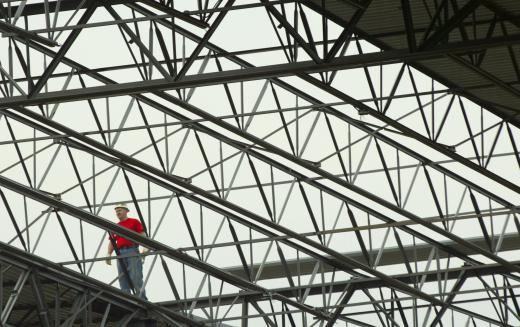The rafters of the building are one of the most important aspects of the structural stability of the roof. There are many types of rafter framing designs. These come in multiple sizes, angles, and building materials. Rafter frames are typically hand built or ordered from rafter manufacturing companies. All frames must be approved by the local building inspection officials, which requires verification of design and installation.
Steel framing is typically used for large buildings and warehouse construction. This type of rafter framing material is stronger than wood, and is more durable for the structure. Steel rafters are connected with large nuts and bolts and typically include welding throughout the steel beam structure.

When designing rafter framing it is important to determine the required pitch of the roof. This will add height to the building and should be thought out carefully to ensure the overall look of the roof is aesthetically pleasing. A high pitch rafter design is typical for most churches, whereas a low pitch roof is more common with large warehouse buildings

Hand crafted rafter framing is more common in large custom home development projects. These are homes with roofs that have multiple slopes and angles. When a home has a complex roof design, it requires a carpenter to create custom rafter framing to meet those special requirements. This type of framing can take many hours to develop and will typically add significant cost to the overall project.
Rafter framing is made in a triangle design. This geometric design ensures strength and stability in the roof area. The rafter is made with three primary parts. These are the rafter boards, collar tie boards, and ceiling joists. Each piece has a specific role in securing the triangle into a complete structural unit.
The ceiling joists are the boards that connect the rafter boards to the ceiling of the building. These joists are normally spaced out at specific dimensions across the entire ceiling area. The joists are the bottom most area of the rafter design.
Buildings require multiple rafters to complete the entire roof. These rafters are evenly spaced across the roof area. Each rafter is connected to a top board, which is called the ridge board. The ridge board represents a central connection point for the rafters of the building.
A roof is a complex carpentry design made up of rafters, hardboard, and roofing material. The roof must be designed to support significant load and wear over decades. Proper rafter framing design helps to ensure the roof remains intact during extreme weather conditions.
